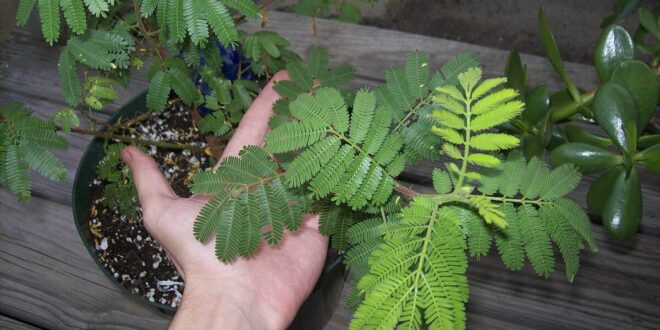Mimosa hostilis renowned for its medicinal and cultural significance and root bark, this plant has garnered interest among botanists, ethnobotanists, and gardening enthusiasts worldwide. Growing Mimosa hostilis can be a rewarding endeavour, but it requires a nuanced understanding of its environmental needs and lifecycle.
This article outlines the main requirements for successfully cultivating mimosa hostilis root bark plants.
Understanding the Natural Habitat
To grow Mimosa hostilis effectively, one must first understand its natural habitat. In the wild, the plant thrives in tropical deciduous forests with a distinct dry season and rain during the wet season. The temperature in these regions typically ranges from warm to hot, and the soil is well-draining with a slightly acidic to neutral pH.
Characteristics and Environmental Preferences
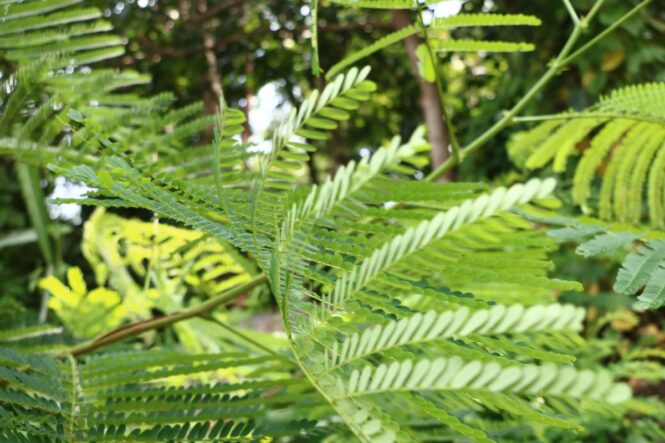
Mimosa hostilis is a perennial shrub native to the northeastern region of Brazil and parts of Mexico. It is renowned for its striking fern-like foliage and vibrant pink or white flowers. The plant is resilient, with a robust root system that makes it drought-resistant and adaptable to various soil types, though it prefers slightly acidic to neutral soil.
This species thrives in tropical to subtropical climates, requiring temperatures between 20°C to 30°C (68°F to 86°F). It does not fare well in frost and needs protection in colder climates. The ideal environment mimics its native habitat, with ample sunlight and moderate humidity.
Botanical Characteristics
It’s a bushy tree that can reach up to 8 metres in height in its natural habitat. The bark is rich in tannins and alkaloids, notably N, N-Dimethyltryptamine (DMT). Its fern-like leaves and flamboyant pinkish-purple flowers make it a visually appealing plant.
Climate Requirements
Mimosa hostilis is a tropical plant and is sensitive to frost. It thrives in USDA Hardiness Zones 9-11, where temperatures rarely drop below freezing. The ideal temperature range for growing Mimosa hostilis is between 68°F and 86°F (20°C and 30°C). If you live in a cooler climate, it is possible to grow Mimosa hostilis in a greenhouse or indoors, provided you can replicate its native tropical conditions.
Cultural and Ethnobotanical Significance
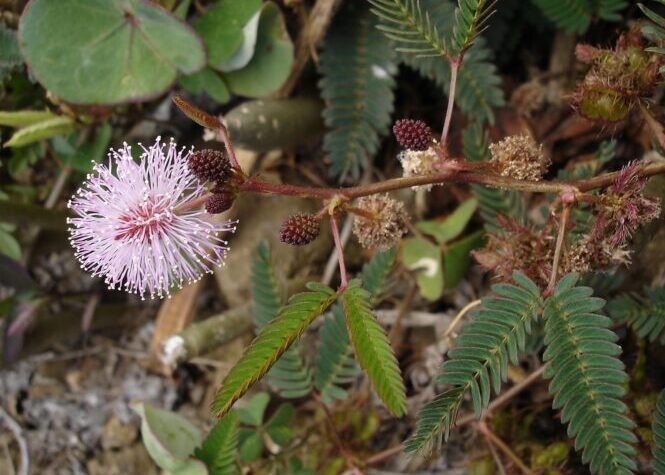
Mimosa hostilis holds significant cultural importance in indigenous communities in a unique country. For centuries, it has been in traditional medicine and spiritual rituals. The bark contains a rich source of tannins and gets used in natural dyeing processes.
Soil and Drainage
Well-draining soil is crucial for the health of Mimosa hostilis. The plant is susceptible to root rot if left in soaked conditions. A sandy or loamy soil enriched with organic matter is ideal, with a pH ranging from slightly acidic to neutral (pH 6.0-7.0). Amending garden soil with perlite or coarse sand can improve drainage if necessary.
Sunlight and Location
Mimosa hostilis flourishes in full sun to partial shade. A location that receives at least 4-6 hours of direct sunlight daily is optimal. When grown indoors or in a greenhouse, ensure that the plant has adequate light, naturally or through supplemental grow lights.
Harvesting Root Bark
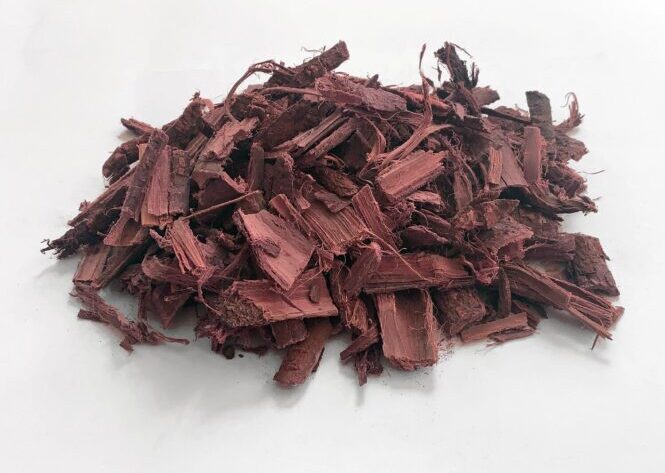
The root bark of Mimosa hostilis is the most sought-after part of the plant due to its ethnobotanical significance. Harvesting should be sustainable, taking care not to damage the plant beyond its ability to recover. It’s advisable to wait several years before harvesting mimosa hostilis root bark from a young plant to ensure it’s well-established and can withstand the process.
Traditional and Modern Uses
Traditionally, Mimosa Hostilis gets used for various purposes, including in natural medicine and as a dye. Its use in skincare products due to its antioxidant and regenerative properties gained popularity.
Watering and Humidity
In its natural habitat, Mimosa hostilis experiences a distinct wet and dry season. Mimicking these conditions is beneficial for the plant’s growth. The soil needs to be kept consistently moist but not soggy during the growing season, which includes spring and summer. In the dormant season (fall and winter), reduce watering to prevent overwatering. High humidity levels, mimicking the plant’s tropical origins, can promote healthy growth.
Fertilisation and Nutrients
Mimosa hostilis is not a heavy feeder, but it does benefit from occasional fertilisation. A balanced, slow-release fertiliser applied in the spring can provide the necessary nutrients for the growing season. Organic options, such as compost or worm castings, can also be used to enrich the soil and promote healthy growth. Incorporating compost or worm castings into the mud can provide additional organic nutrients and improve soil structure.
Propagation
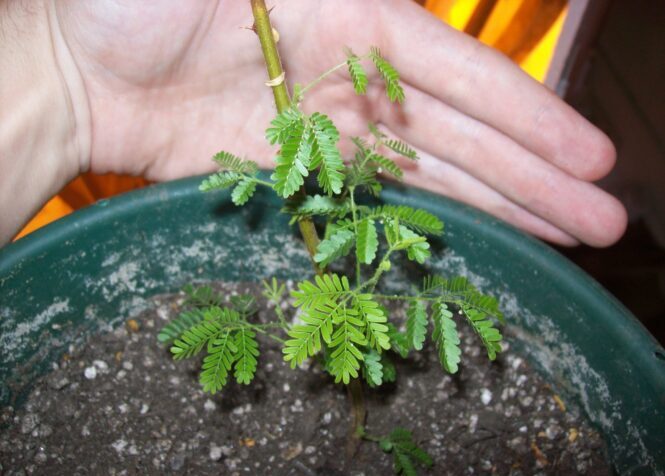
Mimosa hostilis can get propagated through seeds or cuttings. Seeds require scarification (scratching the seed coat) or a brief soak in hot water to break dormancy before sowing. Cuttings are from healthy plants and rooted in a moist, well-draining medium. Both methods require patience, as Mimosa hostilis can be slow to germinate or root.
Pruning and Maintenance
Regular pruning can help maintain the desired shape and size of the plant if grown indoors or in limited space. Pruning also encourages bushier growth and can improve the overall health of the plant by removing dead or diseased branches.
Pests and Diseases
Even though Mimosa hostilis is a hardy plant, it can still become infected with common pests like mealybugs, aphids, and spider mites. Regular inspection and prompt treatment using insecticidal soap or neem oil can help manage infestations. Proper watering and drainage are essential in preventing fungal diseases like root rot.
Challenges and Conservation
Environmental Impact
Mimosa Hostilis is becoming more and more popular. Therefore, understanding how it will impact the environment is essential. Sustainable cultivation and harvesting practices are necessary to preserve this species for future generations.
Legal Considerations
Because Mimosa Hostilis bark contains DMT, its cultivation and sale are prohibited in several areas. It is necessary to be aware of and comply with local laws regarding its cultivation and use.
Conclusion:
Growing the Mimosa root bark plant can be a fulfilling project for gardeners and plant enthusiasts. By providing conditions that closely resemble its natural environment, one can successfully cultivate this fascinating plant. Understanding the requirements of Mimosa hostilis regarding climate, soil, water, light, and nutrients ensures its healthy growth and development. With careful attention and care, gardeners can enjoy the beauty and benefits of this culturally and medicinally significant plant.
 Imagup General Magazine 2024
Imagup General Magazine 2024
